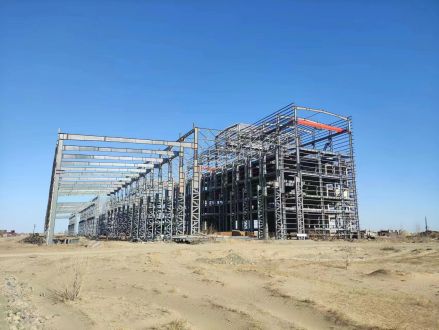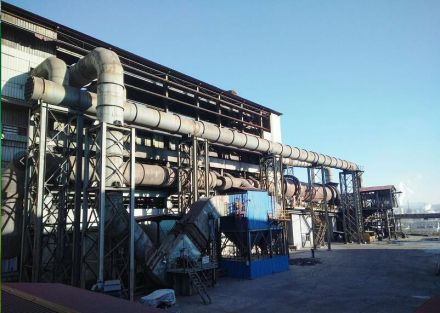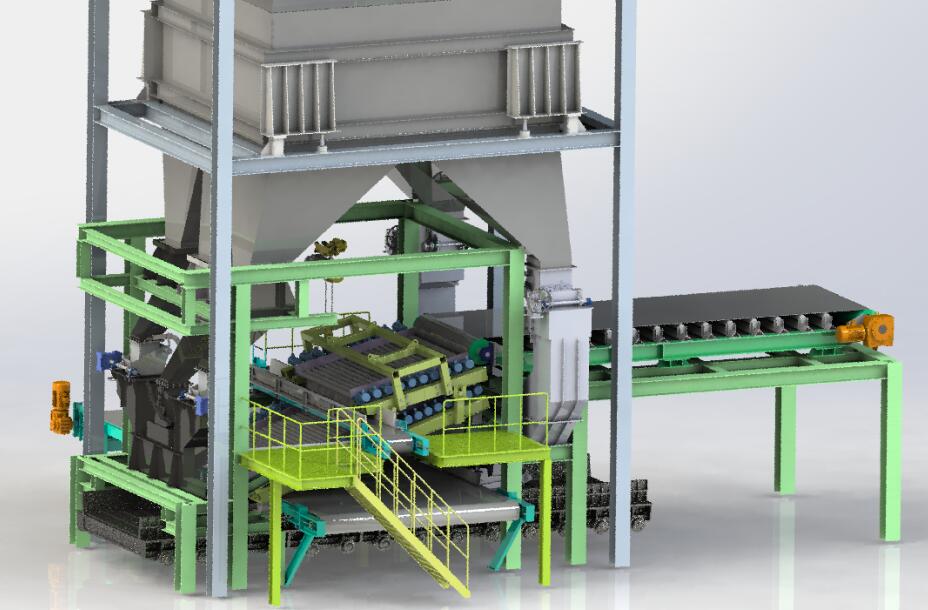Features of the Plane Circulation Straight Grate Technology (PCSG)
With this technique of pellet firing, the drying, preheating, roasting and cooling processes are done in the same equipment, which is simple, reliable and easy to maintain, and suitable for magnetite, hematite and other types of iron ores. The PCSG technique has limited heat loss, unlike the Grate-Kiln process in which the return grate bed of the travelling grate radiates a good amount of heat, and the heat loss from the rotary kiln is also considerable due to the wide area of the kiln and the return hot air pipeline.
The amount of heat resistant alloy steel, total weight of main and auxiliaries, and investment of main part of the PCSG is only50% that of the widely used Chain Circular Straight Grate Roasting Machine. And the investment is about 60% that of the whole “travelling grate – rotary kiln – annular cooler” system.
With less civil construction work needed such as foundation, plant buildings and steel structures, the construction cost and construction period of PCSG are remarkably reduced.
As pellets remain undisturbed throughout the whole induration process in this PCSG technique, such defects as ring-forming and caking are avoided, which are common in the Grate-Kiln process, thus reducing the difficulty of operation and making it suitable for nearly all types of iron ores.
As limited dust is generated from the process, dust-removal is not necessary for return hot air, thus reducing the cost of de-dusting equipment and operation.
As preheated pellets remain still with no transportation needed, requirements on strength of pellets are negligible, thus lowering the amount of binder and improving the grade of pellets.
Multiple burners are mounted in the preheating and roasting sections to control temperatures in better accuracy, bringing the following advantages:
1) Better flexibility of operation;
2) Easier adjustment of temperature profile;
3) Adaptable firing temperature and temperature gradient for different raw materials.
As the refractory of the top cover are stationary, contact with pellets is avoided; therefore it’s free from mechanical wear and abrasion, dramatic temperature changes, and mass dust generation, as a result the service life of refractory is extended.
The separation of return trolley and indurations production line makes overhaul of the trolley easier, as a result productivity is improved.
The recycling of hot roasting air substantially reduces energy consumption of pellet firing. The adoption of the PCSG technique makes it possible to control the composition and quality of pellets more flexibly to meet process requirements of blast furnace steel making or DRI.
This system can be upgraded directed from the obsolete plane Dwight-Lloyd sintering machine system. After upgrading and reconstruction, quality of product is improved and consumption is lowered.







